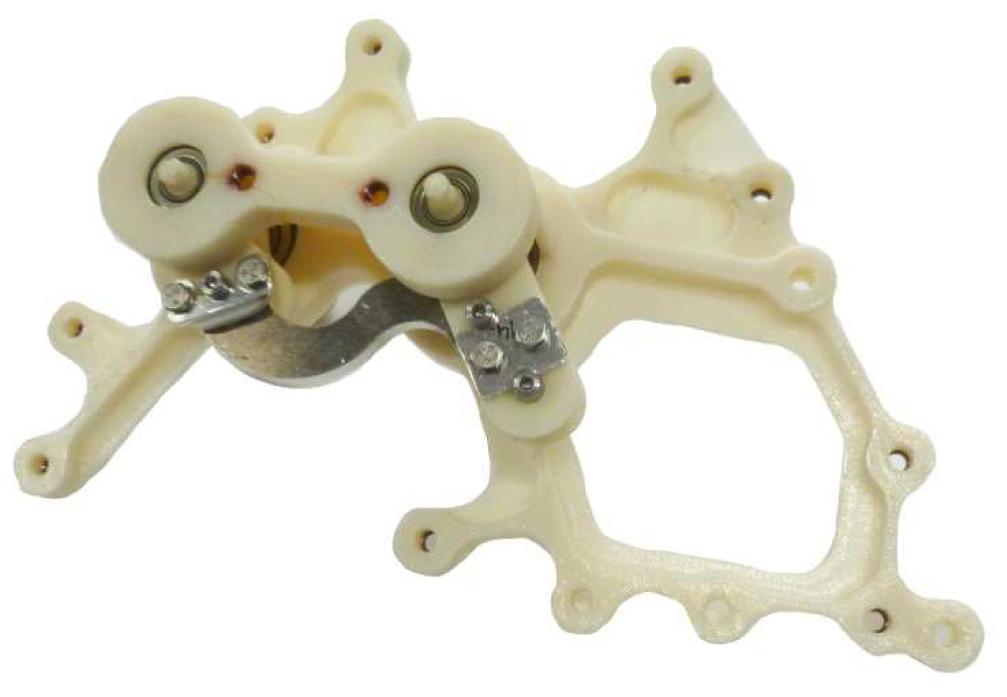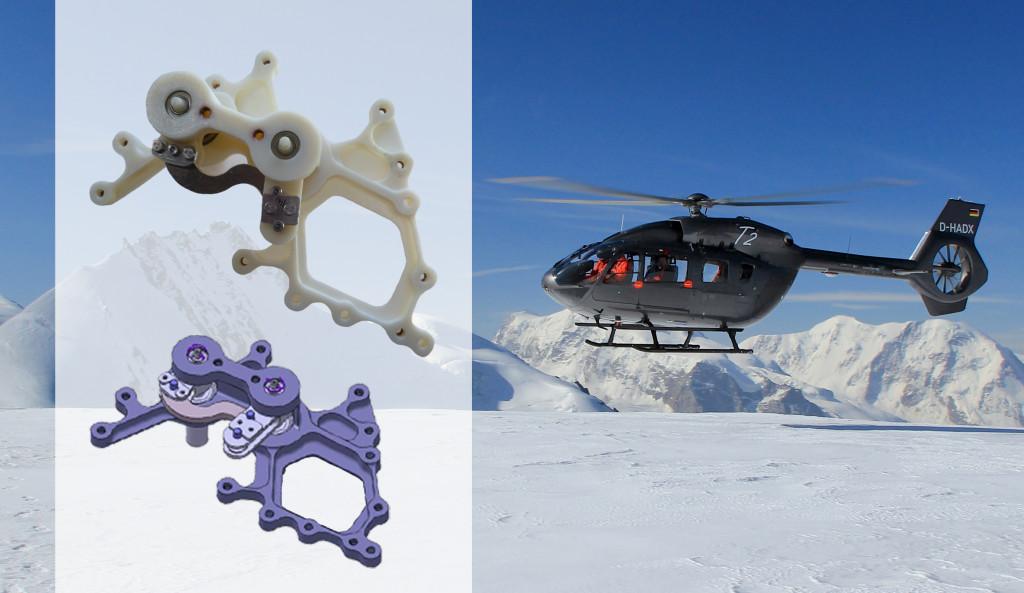 Aircraft manufacturer Airbus is really excited about 3D printing. We’ve written several articles about their Airbus A350 XWB, which was manufactured using over 1,000 3D printed parts, and they’re continuing to experiment with the technology for future airplanes. The European company is fully on board, so to speak, with 3D printing, and their helicopter manufacturing division, Airbus Helicopters, is no exception. Recently, the division relied on a 3D printer to manufacture some of the most crucial parts of any vehicle: windshield wipers.
Aircraft manufacturer Airbus is really excited about 3D printing. We’ve written several articles about their Airbus A350 XWB, which was manufactured using over 1,000 3D printed parts, and they’re continuing to experiment with the technology for future airplanes. The European company is fully on board, so to speak, with 3D printing, and their helicopter manufacturing division, Airbus Helicopters, is no exception. Recently, the division relied on a 3D printer to manufacture some of the most crucial parts of any vehicle: windshield wipers.
Windshield wipers may not seem particularly interesting; what is there to improve about them, anyway? They’re windshield wipers. They wipe windshields, and they’ve been wiping windshields for as long as cars, airplanes and helicopters have existed. They’re complicated little pieces of machinery, though, and no one can argue that they aren’t critical. I live in what’s known as the Snow Belt, so I’ve been driving in horrendous conditions since I got my license. Believe me, the design and quality of windshield wipers makes a huge difference. They’re even more vital for aircraft. While you can pull your car to the side of the road to clean off your windshield if necessary, that’s not exactly an option with a plane or helicopter. So your wipers better be good.
 Airbus Helicopters has been working on making their windshield wipers both more effective and less expensive, and they recently developed a whole new wiper system with help from German RepRap. The industrial 3D printer manufacturer was the first in Germany to market a professional, large-capacity RepRap printer, and the X400 has been popular in a range of industries including automotive, medical technology, aerospace, architecture and more. For Airbus Helicopters, the X400 was instrumental in creating their new windshield wiper system.
Airbus Helicopters has been working on making their windshield wipers both more effective and less expensive, and they recently developed a whole new wiper system with help from German RepRap. The industrial 3D printer manufacturer was the first in Germany to market a professional, large-capacity RepRap printer, and the X400 has been popular in a range of industries including automotive, medical technology, aerospace, architecture and more. For Airbus Helicopters, the X400 was instrumental in creating their new windshield wiper system.
“These windshield wipers require a multitude of tests with regard to their functionality and serviceability, as well as their ease of installation and the future manufacturing process,” said Frank Singer, manager of engineering at Airbus Helicopters Deutschland GmbH.
Needless to say, such extensive testing can take a lot of time and money. The X400, however, greatly reduced the requirements for both. After a model was developed, the X400 was used to quickly print the gears, levers and shafts for the wipers; the threads, bearings and sleeves would be incorporated at a later time. With this process, Airbus was able to create prototype after prototype at minimal cost. Those functional prototypes could then be tested alongside the helicopter’s other components.
According to Singer, the benefits of 3D printing are not limited to cost effectiveness. In other manufacturing processes, a functional prototype cannot be produced nearly as early on as it can be with 3D printing. Such an early prototype allows for parts to be more quickly and easily tested, and for problems to be corrected much more efficiently. For Airbus, which manufactures helicopters for crucial military purposes, efficiency and thoroughness are of the utmost importance, and German RepRap was glad to help. Tell us your thoughts on this project in the German RepRap 3D Printed Windshield Wiper Prototypes forum over at 3DPB.com.
Subscribe to Our Email Newsletter
Stay up-to-date on all the latest news from the 3D printing industry and receive information and offers from third party vendors.
You May Also Like
Precision at the Microscale: UK Researchers Advance Medical Devices with BMF’s 3D Printing Tech
University of Nottingham researchers are using Boston Micro Fabrication‘s (BMF) 3D printing technology to develop medical devices that improve compatibility with human tissue. Funded by a UK grant, this project...
3D Printing Webinar and Event Roundup: April 21, 2024
It’s another busy week of webinars and events, starting with Hannover Messe in Germany and continuing with Metalcasting Congress, Chinaplas, TechBlick’s Innovation Festival, and more. Stratasys continues its advanced training...
3D Printing Webinar and Event Roundup: March 17, 2024
It’s another busy week of webinars and events, including SALMED 2024 and AM Forum in Berlin. Stratasys continues its in-person training and is offering two webinars, ASTM is holding a...
3D Printed Micro Antenna is 15% Smaller and 6X Lighter
Horizon Microtechnologies has achieved success in creating a high-frequency D-Band horn antenna through micro 3D printing. However, this achievement did not rely solely on 3D printing; it involved a combination...






























